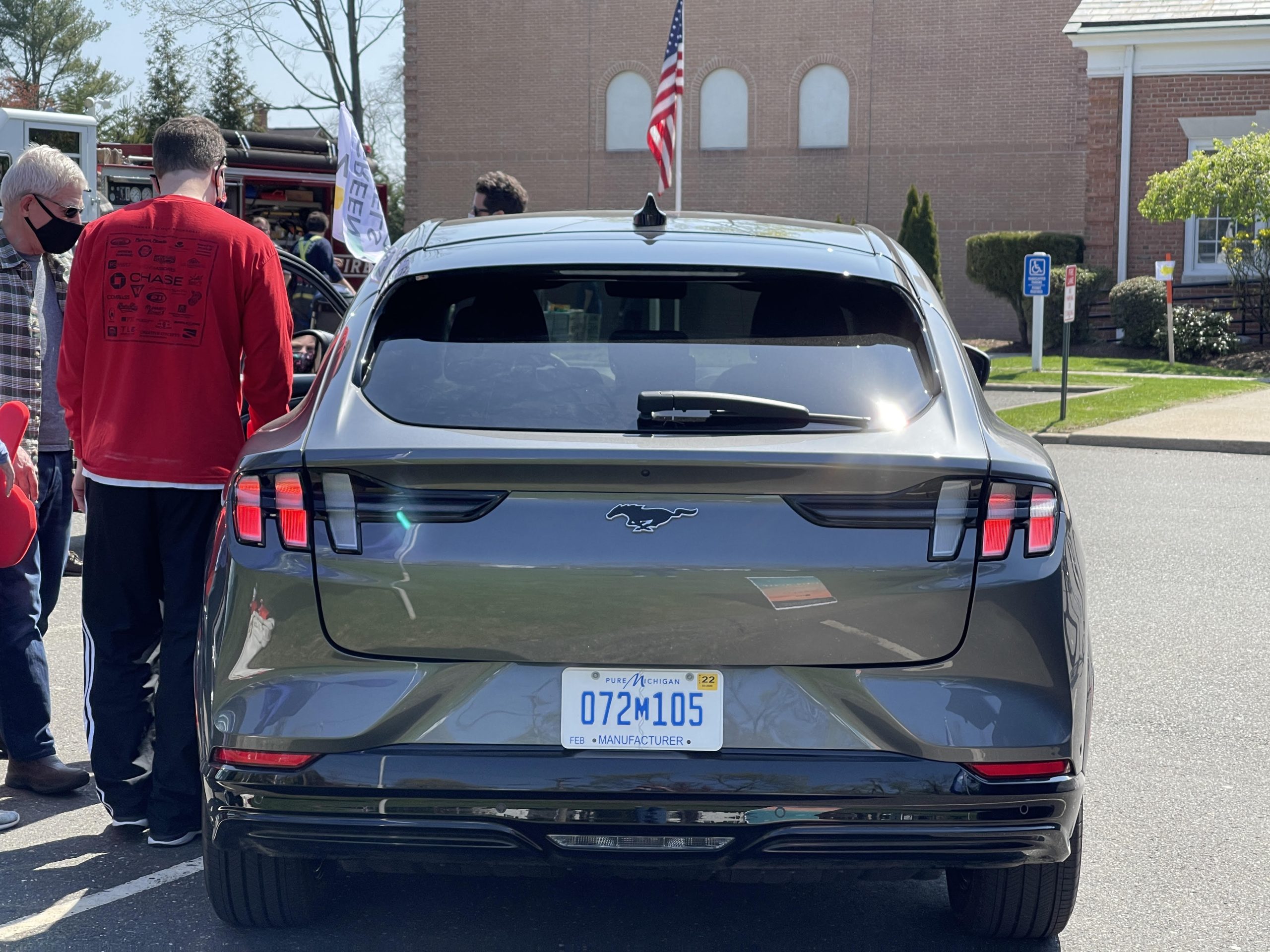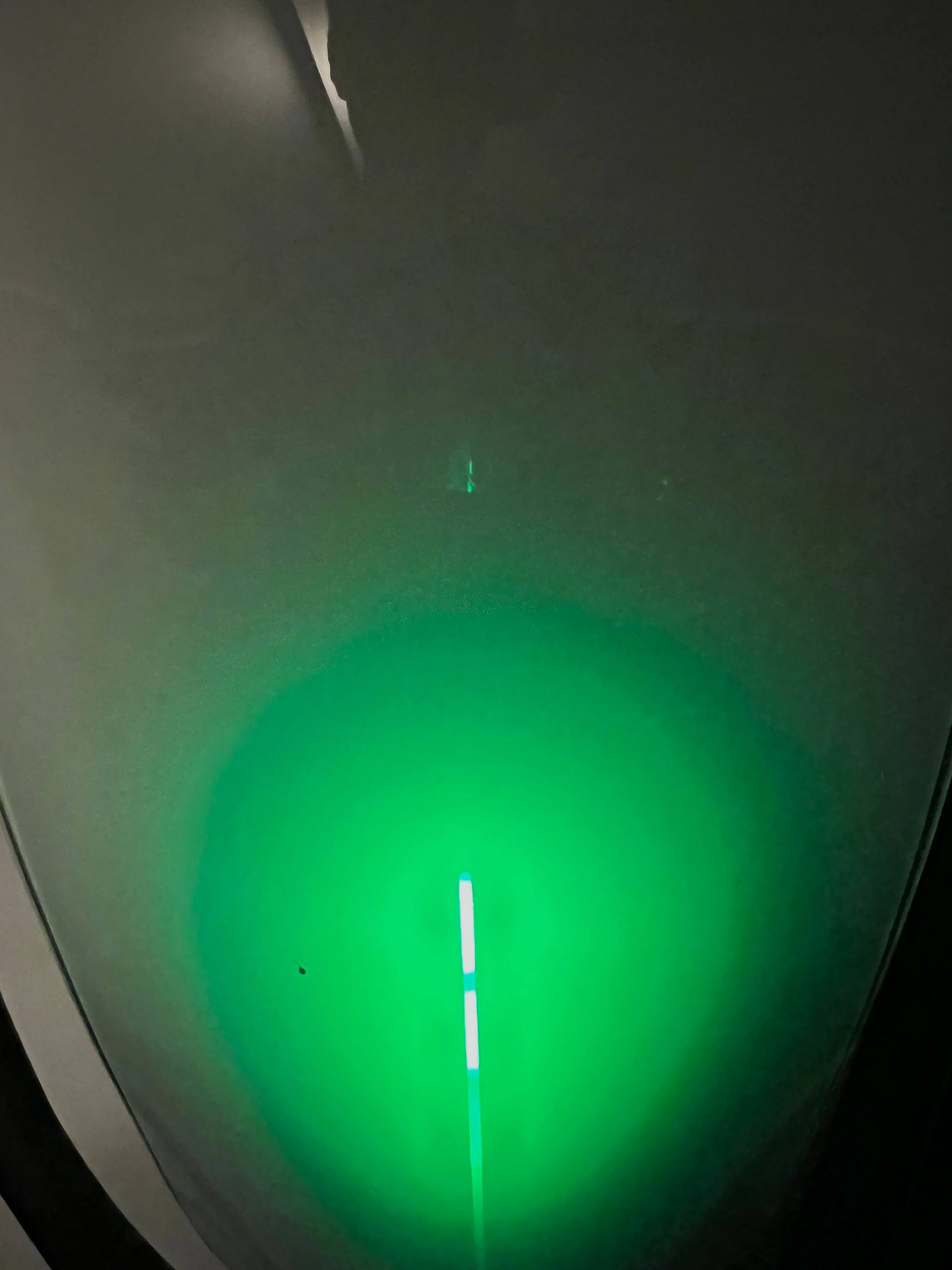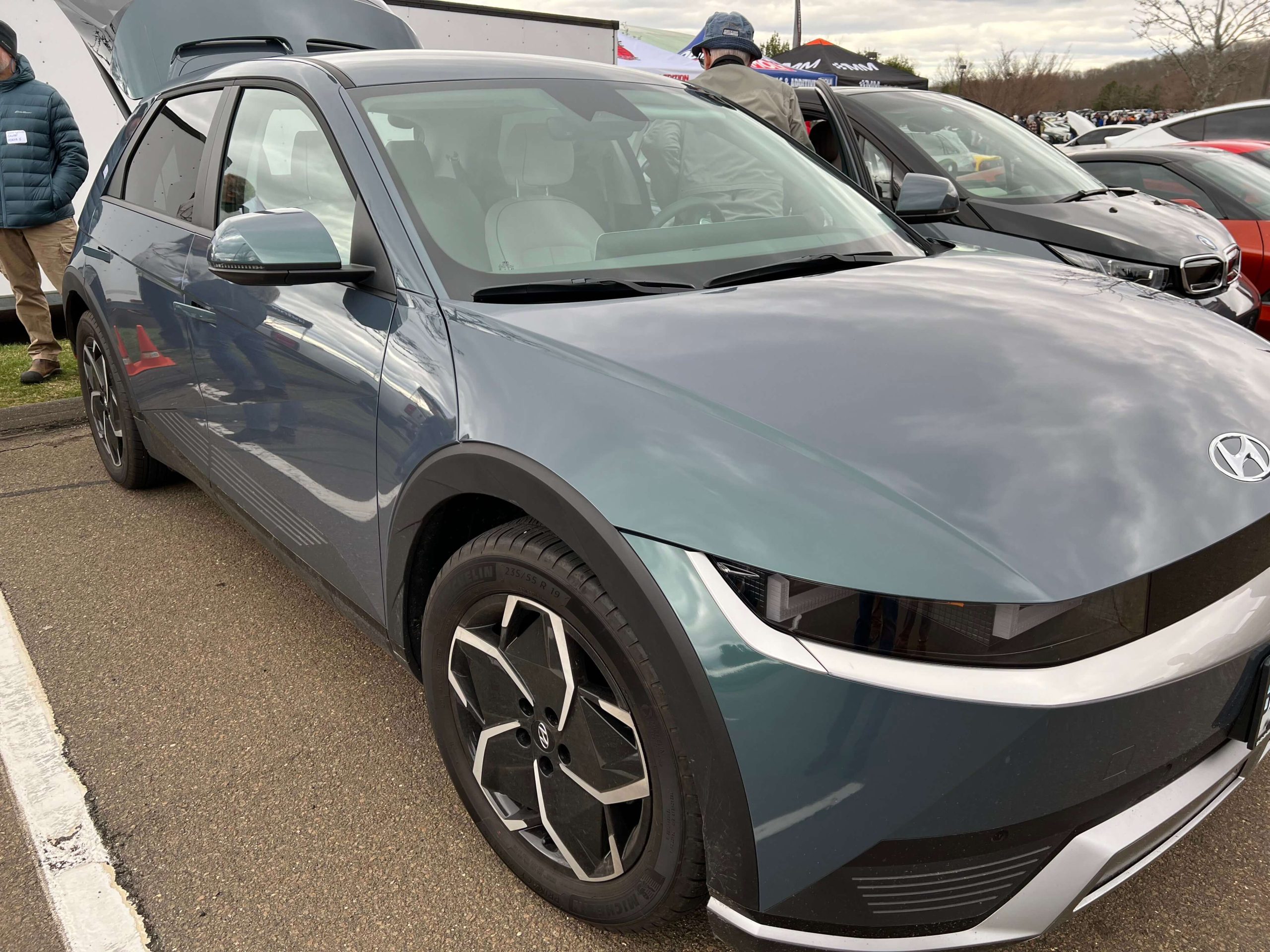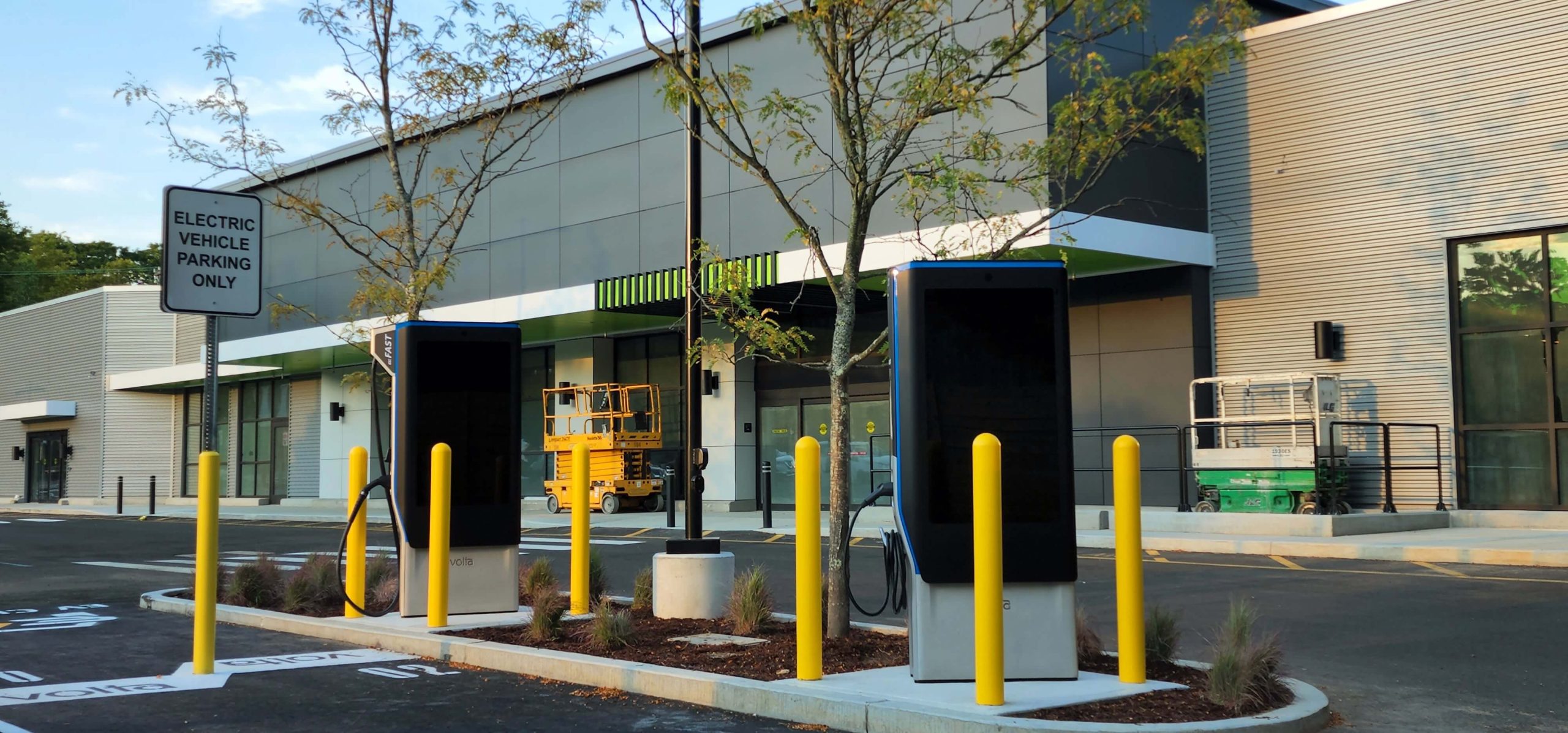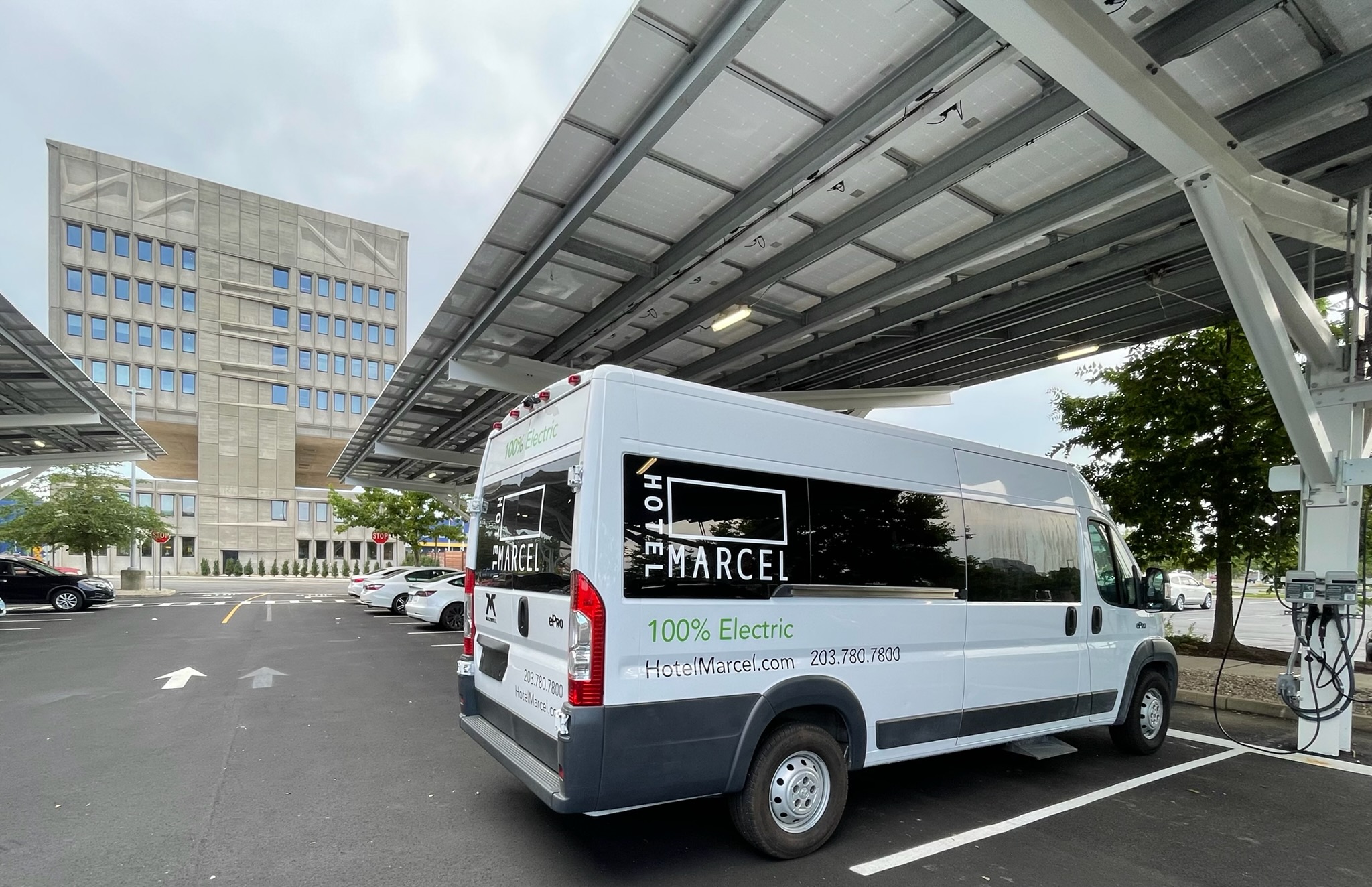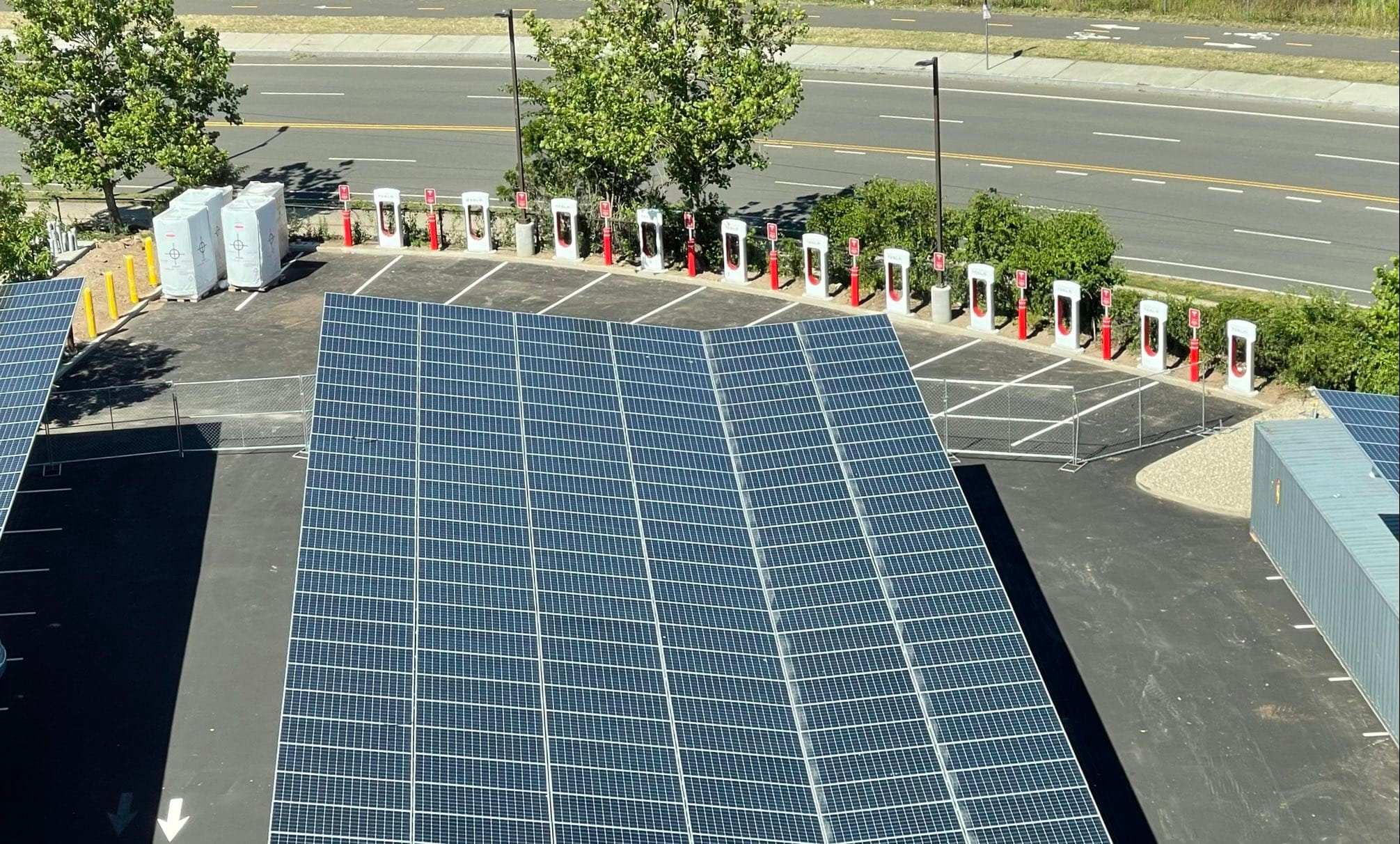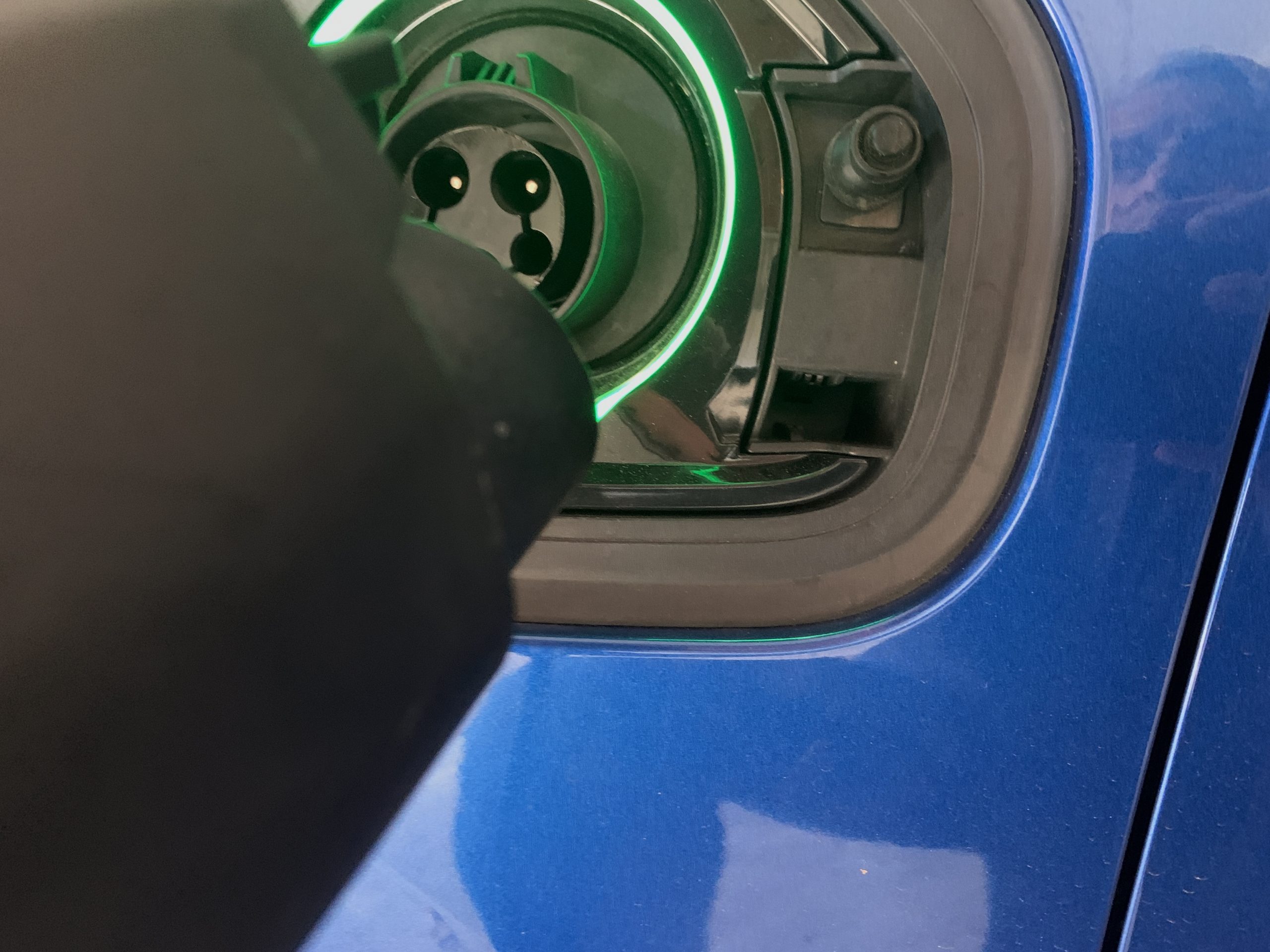Charging Cluster at Hotel Marcel
24 Chargers at Hotel Marcel in New Haven Photos: Hotel Marcel, Maxwell Electric Shuttle Minibus parked at an EVConnect charger, Solar Canopy and Tesla chargers, charging under the canopy At long last, the chargers at … Read more


